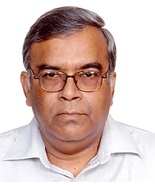International Conference on Coastal Zones
Osaka, Japan

Abu Saleh Khan
Deputy Executive Director, Institute of Water Modelling, Dhaka, Bangladesh
Title: Tidal River Management Concept used in SW Region of Bangladesh
Biography
Biography: Abu Saleh Khan
Abstract
Bangladesh is a land of rivers. It is the drainage route of the mighty Brahmaputra, Ganges and Meghna Rivers. Thus all water from these river catchments and also water from other 54 cross-boundary rivers are being carried away by hundreds of rivers, tributaries, and distributaries that crisscross this small land like a giant web. Our everyday life-culture, our agriculture, fisheries, economy, communication, and our industries – all these activities are river-centered. In the 60s of the previous century, a number of polders were constructed in order to reduce the impact of salinity and increase agricultural productivity. But in course of time with the gradual reduction of upstream flow added with the sedimentation of the drainage routes these polders have only assisted in increasing the impact of water logging and salinity. Upstream withdrawals by India on the other hand have resulted in numerous distributaries of the Ganges River of not getting water during the dry seasons and so the freshwater resources have also dried up. Even repeated dredging has failed to maintain the navigability of rivers such as Garai. In the backdrop of such calamitous situation, the people removed the embankment surrounding the wetland beel Voina. As a result the water entered the beel and in the regular course of high and low tide, the wetland has filled up and thus put an end to water logging. Bangladesh Water Development Board has taken initiative to use this experience of the local people. Subsequently Institute of Water Modeling (IWM) has become a partner to the initiative taken by Bangladesh Water Development Board and has verified this concept through the use of mathematical model study.
